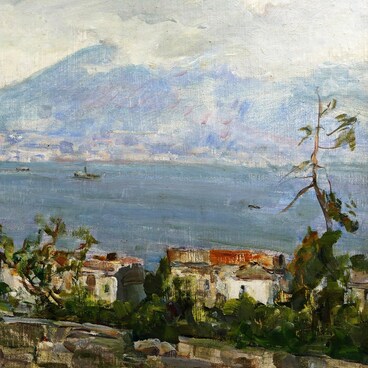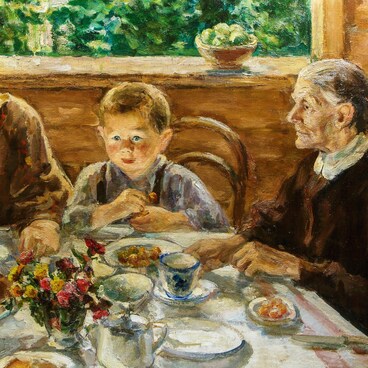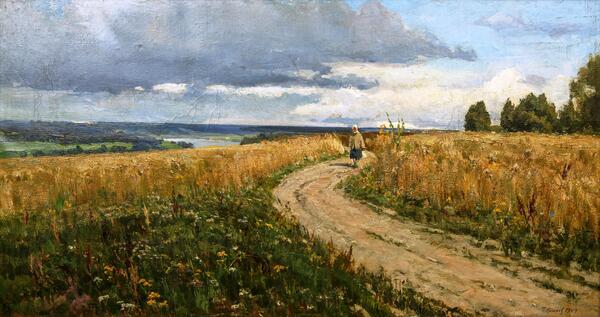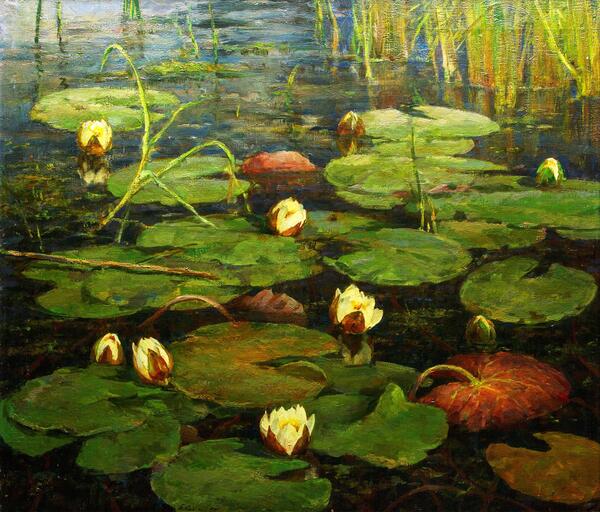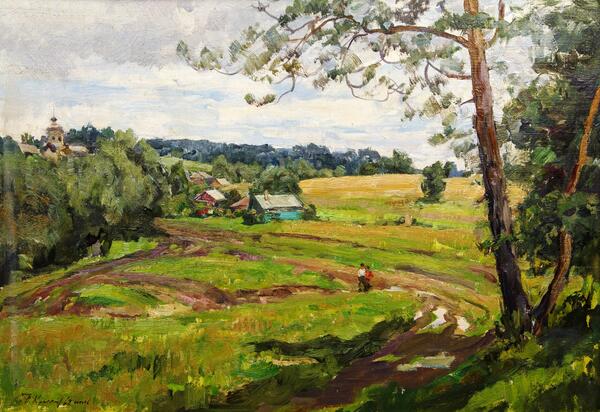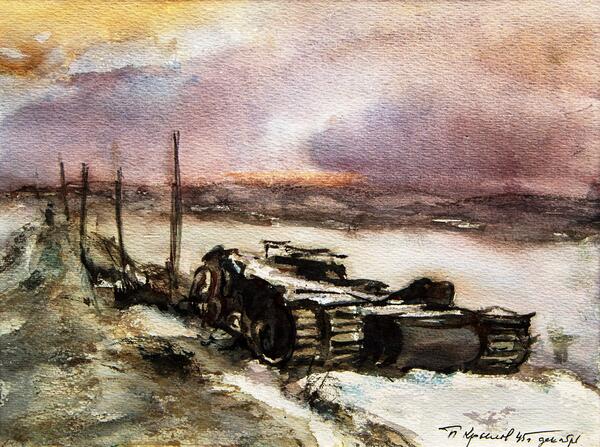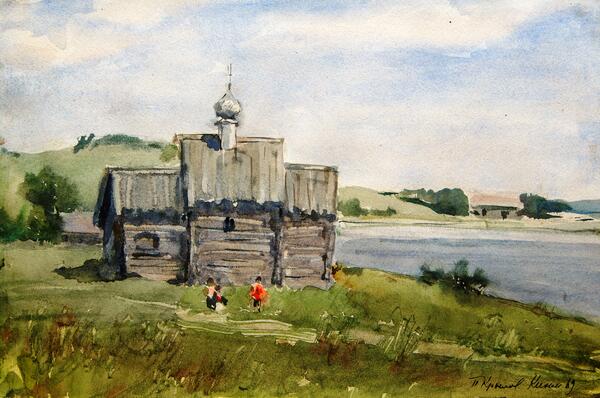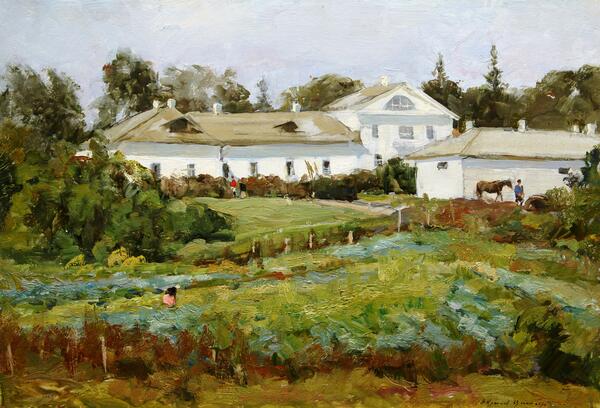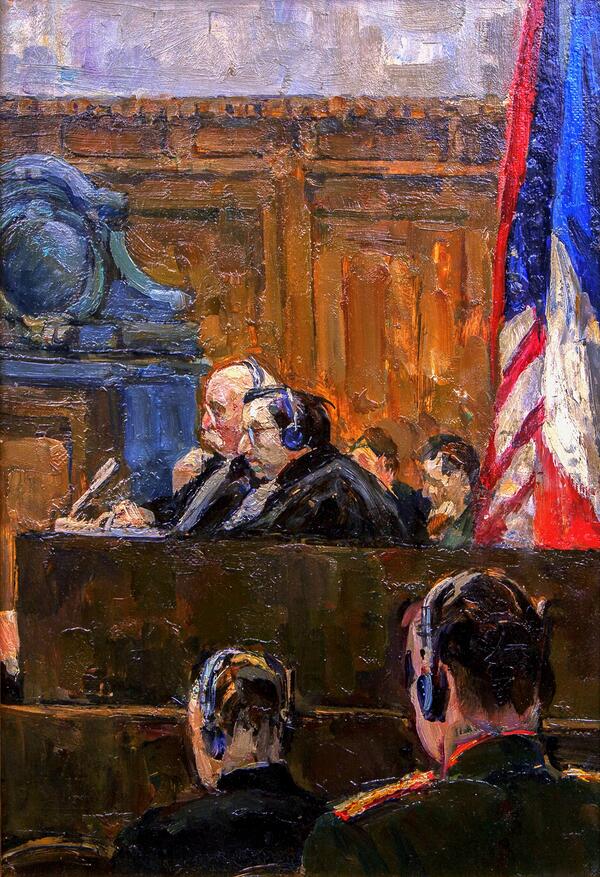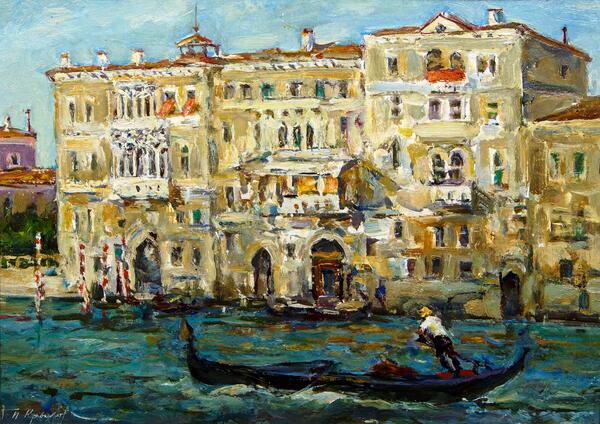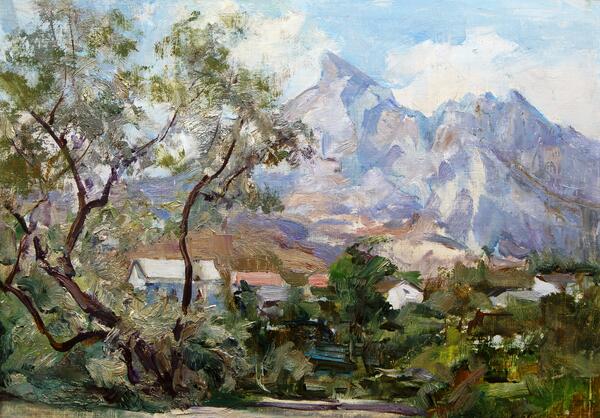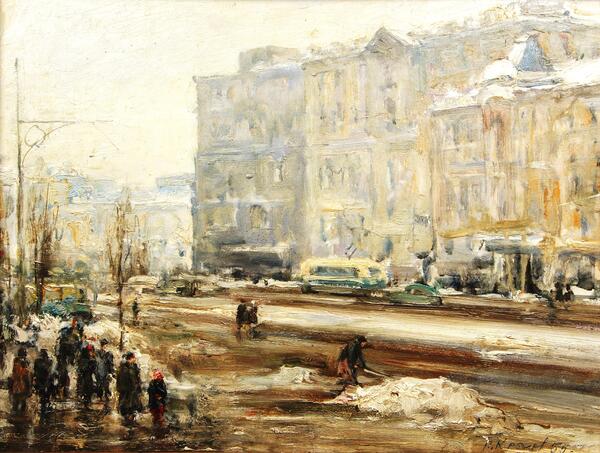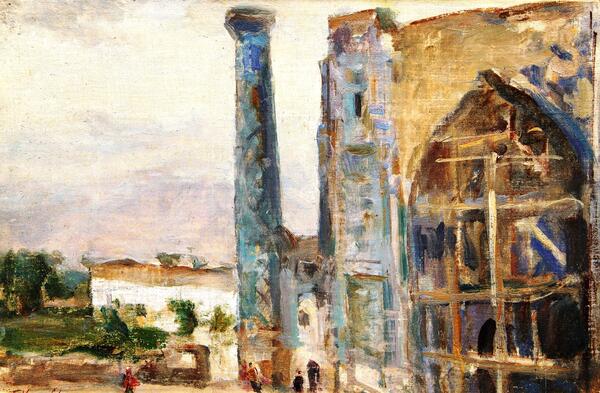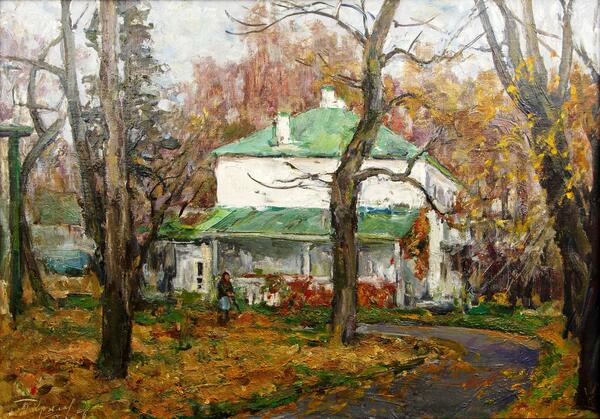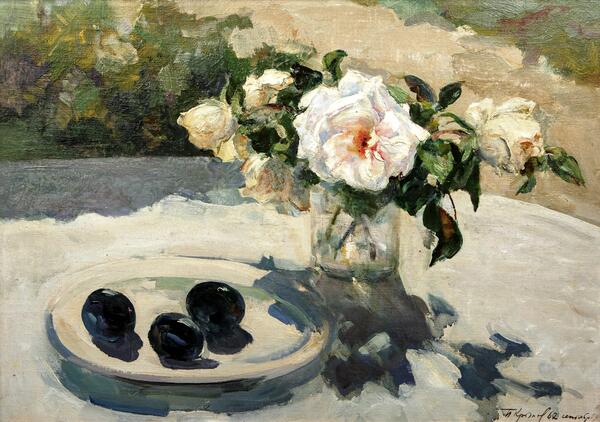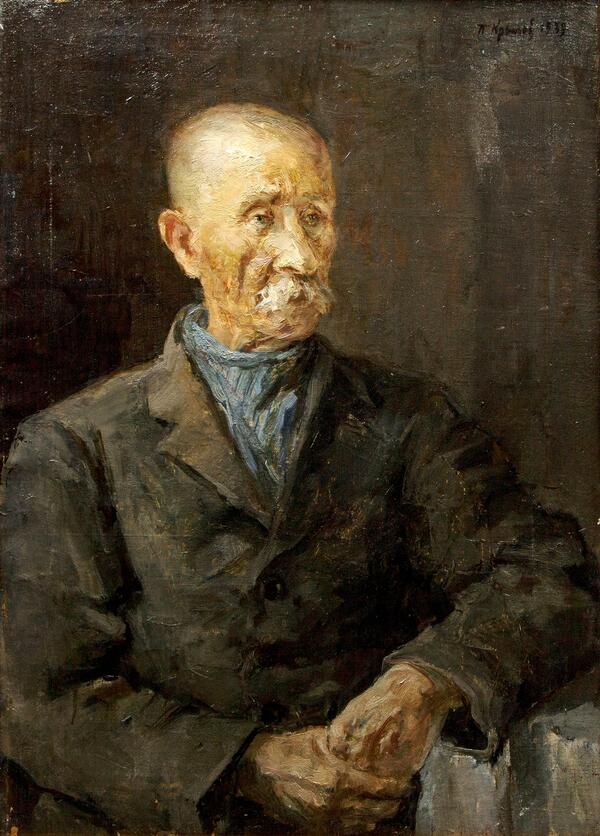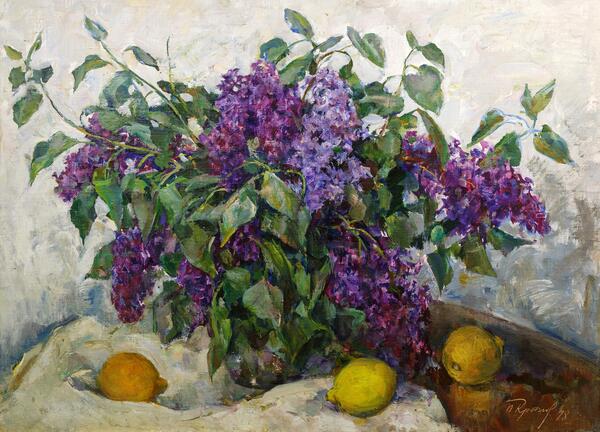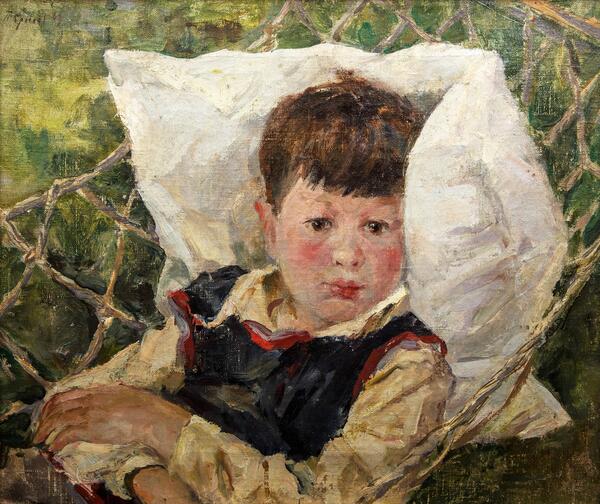The Soviet artist Porfiry Krylov was one of the three members of the artistic group “Kukryniksy”, who repeatedly represented the USSR at European exhibitions. Krylov visited the Venice Biennale several times, fell deeply in love with Italy and returned there not only for business trips, but also on family vacations. Krylov’s picturesque European landscapes are a stand-alone part of his creative heritage.
Excerpt from Porfiry Krylov’s letter:At Villa Abamelek
There was Rome, Naples, Pompeii, Sorrento, Capri, and Bologna. So many impressions that I have yet to process them… we have spent a whole month in Italy. We showed our works at an exhibition in Rome… After the opening of the exhibition, we went around small Italian towns, where we got acquainted with classical paintings. We visited Assisi, Arezzo, Perugia, Siena, Florence and Milan… Our exhibition was a great success… our hall aroused continuous interest. After Milan, we returned to Villa Abamelek in Rome again. What a wonderful trip this was…
Villa Abamelek and its surroundings have repeatedly become the main subject of the artist’s Italian landscapes. When he came to Italy, he was often an honored guest at this ancient villa. The house is adorned with a picturesque park with various breeds of old trees, decorative bushes, antique sculptures, amphorae and fountains — all this inspired the artist to no end.
Villa Abamelek is located in the center of Rome on the border with the Vatican. The name of the estate is associated with the name of its last owner — the Russian Prince Semyon Semyonovich Abamelek-Lazarev. In 1907, the prince created a magnificent architectural and park ensemble and stored his rich art collection of paintings, tapestries, antique sculpture and mosaics in the villa.
Villa Abamelek became one of the centers of Russian culture in Rome at the turn of the 20th centuries. After the death of Abamelek-Lazarev in 1916, according to his will, the villa was to become the property of the Imperial Academy of Arts and repurposed as a boarding house for artists and sculptors. This would have been a continuation of the traditions that developed during the prince’s lifetime, but the October Revolution and the new Soviet government had something else in mind.

